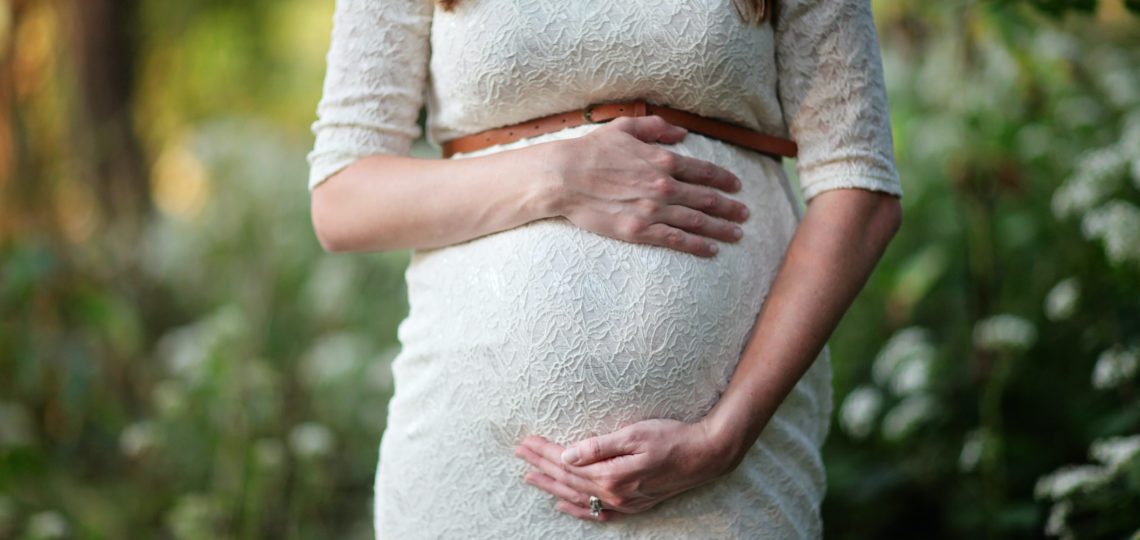Maternity Benefit for Second Child or Second Delivery?
The recent moot question in the minds of employers and employees is whether women are entitled for maternity leave for their second child. In a recent Judgment, Union of India and Ors. vs. M. Asiya Begum, the Hon’ble Madras High Courtheld that the women are not entitled to maternity benefits for their second delivery. Several points need to be taken into consideration factually and legally and has to be analysed whether the same results in Mate-hara (maternity harassment). This article will be concentrating on the difference between the General Maternity Law and Special Rules and how the case factually goes outside the purview of the Maternity Benefit Act.
Facts of the Case
Asiya Begum is a Sub-Inspector of Central Industrial Security Force to whom neither the Maternity Rules of the State nor the Maternity Benefit Act, 1961 (“the Act”) applies. The Central Civil Services (Leave) Rules, 1972 (“the Leave Rules”) is applicable in the present case.
It is a writ appeal filed by the Union of India under Clause 15 of the Letters Patent against the impugned judgment dated 18.06.2019 passed by the Hon’ble Single Justice V. Parthipan of Madras High Court.
The impugned order allowed the maternity benefits to Asiya Begum i.e., maternity leave for 180 days from 13.02.2017 to 12.8.2017 for all purposes.
An appeal was preferred and the same was admitted by the Division Bench headed by Hon’ble Chief Justice of Madras High Court, Justice A. P. Sahi and Justice Subramonium Prasad.
Second Child or Second Delivery
Since the Leave Rules are applicable to Asiya Begum, the question is whether the maternity benefit is applicable to the second child or second delivery. Asiya Begum gave birth to twins during her first delivery and in the second delivery; she gave birth to her third child. Rule 43 of the Leave Rules, 1972 clearly provides the following maternity benefits to female employees having less than two children:
- 180 days leave and
- Leave Salary equal to the pay drawn immediately before the leave.
The Hon’ble Court pointed out that the mathematical precision of two surviving children in the Rules cannot be overlooked and denied the maternity leave to Asiya Begum by stating that the second delivery is for the third child. In case twins, the born two children will differ in elderly status by the time gap and thus it will be considered as two deliveries. Moreover, the Court also held that the leave can be treated as a medical leave and also opined that the Appropriate Authority is having the power to relax the rules in exceptional circumstances
“….it entails financial consequences which ultimately results in deprivation of benefits to the new born child who is no way concerned either with the framing of Rules or the choice of parents to have a child.”
Why Maternity Benefit Act is not applicable in this case?
Maternity Benefit Act, 1961 is applicable to female employees of every establishment being a factory or mine or plantation (including the establishment belonging to Government and also the establishments where the persons are employed for the exhibition of equestrian, acrobatic and other performances). It is understood that the Act is of wide connotation and includes any working establishment. On the other hand, the Leave Rules is applicable only to the Government Servants appointed to the Civil Services and posts that are in connection with the affairs of the Union (Some exceptions are given under the same rule where the Leave Rules are not applicable).
On comparing the Act and Leave Rules, it is evident that the Rules is a special law and governs the maternity leave of Asiya Begum. Article 13 of the Indian Constitution states that the rules fall within the category of “law”.When a general law and special law exist regarding the same aspect, the special law prevails (Generalia Specialibus Non Derogant) and thus, the Leave Rules is applicable in the present case.
Are the Leave Rules in consonance with the latest maternity jurisprudence in India?
Leave Rules under Rule 43 allows maternity leave only to the female workers having less than two surviving children. But we can see that the Leave Rules was criticised for two aspects:
- Not in consonance with the International Standards of Maternity Benefit.
- Going against the object of the Maternity Benefit Act (Domestic Legislation).
It has been emphasised in B. Shah vs. Presiding Officer, Labour Courtthat the Maternity Benefit Act is a beneficial legislation which is intended to achieve the object of social justice and women empowerment falling under the purview of Article 42 of Indian Constitution (The State shall make provision for securing just and humane conditions of work and maternity relief). The Apex Court held that:
“…the beneficent rule of construction which would enable the woman worker not only to subsist but also to make up her dissipated energy, nurse her child, preserve her efficiency as a worker and maintain the level of her previous efficiency and output has to be adopted by the Court.”
The Hon’ble Supreme Court and the High Courts of India have adopted the same beneficial rule of interpretation and followed the maternity jurisprudence in consonance with the Convention 103 concerning Maternity Protection Convention (Revised) 1952, adopted by the General Conference of the International Labour Organisation which states as:
Article 4.1: While absent from work on maternity leave in accordance with the provisions of Article 3, the woman shall be entitled to receive cash and medical benefits.
Article 4.4: The cash and medical benefits shall be provided either by means of compulsory social insurance or by means of public funds; in either case they shall be provided as a matter of right to all women who comply with the prescribed conditions.
In consonance with the same interpretation principles, the State Government of Tamil Nadu had passed Government Orders to confirm that the female employees are entitled to maternal benefits for second delivery. The Hon’ble High Court of Madras upheld the same in the cases of J. Sharmila vs. The Secretary to Government and T. Priyadharshini vs. The Secretary to Government, where the Court held that the Government Orders declining the benefits to the women for second delivery, when twins were born out of the first delivery, were held to be constitutionally invalid. The Hon’ble Court also affirmed that the executive actions cannot supersede the substantial law.
On the other hand, the Government expressed its intention to control the population explosion in India. Since there is no restraint on the population, the resources, employment, finance and opportunities of the public will be affected and eventually the equitable distribution of wealth and resources will be impossible. The Indian Government expressed its intention to adopt Two-Child Policy and with a substantial increase in the population, a private member bill, the Population Control Bill, 2020, was introduced in Lok Sabha and the same is now pending before the Rajya Sabha.
Similarly, the Maternity Benefit (Amendment) Act, 2017 increased the maternity benefits from 12 weeks to 26 weeks and the benefits have been extended to the commissioning mothers and surrogates.
Conclusion
With these developments, we can see that the Maternity Jurisprudence is changing with tides of time. Earlierits major focus was women rights and employment but slowly the law succeeded in promoting women employment in various sectors. Keeping in mind the both essential goals (Article 42 versus Article 47A), it becomes necessary for the Government to adopt a liberal approach to support women and also an iron claw to control the escalating population. It is pertinent to note that the discretion was given to the Appropriate Authority to relax the conditions. Thus we can see the balance among all the three organs:
Legislature: Making Laws, Rules and Amendments with changing needs of time.
Executive: Creating Government Orders to support and clarify the legislations.
Judiciary: Adopting perfect interpretation methods to promote women empowerment and make Indian laws to stand at par with International Law.









 He holds a Bachelor’s and Master’s Degree in Corporate Secretaryship and a Degree in Law. He is a Fellow member of the Institute of Company Secretaries of India and an Associate Member of the Corporate Governance Institute, UK and Ireland. He has also completed a program from ISB on ‘Value Creation through Mergers and Acquisitions.
He holds a Bachelor’s and Master’s Degree in Corporate Secretaryship and a Degree in Law. He is a Fellow member of the Institute of Company Secretaries of India and an Associate Member of the Corporate Governance Institute, UK and Ireland. He has also completed a program from ISB on ‘Value Creation through Mergers and Acquisitions. Mr P Muthusamy is an Indian Revenue Service (IRS) officer with an outstanding career of 30+ years of experience and expertise in all niche areas of Indirect Taxes covering a wide spectrum including GST, Customs, GATT Valuation, Central Excise and Foreign Trade.
Mr P Muthusamy is an Indian Revenue Service (IRS) officer with an outstanding career of 30+ years of experience and expertise in all niche areas of Indirect Taxes covering a wide spectrum including GST, Customs, GATT Valuation, Central Excise and Foreign Trade. During his judicial role, he heard and decided a large number of cases, including some of the most sensitive, complicated, and high-stake matters on insolvency and bankruptcy, including many cases on resolution plans, shareholder disputes and Schemes of Amalgamation, De-mergers, restructuring etc.,
During his judicial role, he heard and decided a large number of cases, including some of the most sensitive, complicated, and high-stake matters on insolvency and bankruptcy, including many cases on resolution plans, shareholder disputes and Schemes of Amalgamation, De-mergers, restructuring etc., Ms. Sarah Abraham has been enrolled with the Bar Council of Tamil Nadu since 1998. Her areas of practice include Shareholder Disputes, Corporate Compliances, Mergers and Acquisitions, Private Equity/ Venture Capital Agreements and allied disputes, Information Technology Contracts, Intellectual Property, General Commercial Agreements, Litigation, Arbitration and Mediation.
Ms. Sarah Abraham has been enrolled with the Bar Council of Tamil Nadu since 1998. Her areas of practice include Shareholder Disputes, Corporate Compliances, Mergers and Acquisitions, Private Equity/ Venture Capital Agreements and allied disputes, Information Technology Contracts, Intellectual Property, General Commercial Agreements, Litigation, Arbitration and Mediation. A K Mylsamy is the Founder, Managing Partner and the anchor of the firm. He holds a Degree in law and a Degree in Literature. He is enrolled with the Bar Council of Tamil Nadu.
A K Mylsamy is the Founder, Managing Partner and the anchor of the firm. He holds a Degree in law and a Degree in Literature. He is enrolled with the Bar Council of Tamil Nadu. M Subathra holds a Degree in law and a Master’s Degree in International Business Law from the University of Manchester, United Kingdom. She is enrolled with the Bar Council of Tamil Nadu.
M Subathra holds a Degree in law and a Master’s Degree in International Business Law from the University of Manchester, United Kingdom. She is enrolled with the Bar Council of Tamil Nadu. Mr. K Rajendran is a former Indian Revenue Service (IRS) officer with a distinguished service of 35 years in the Indirect Taxation Department with rich experience and expertise in the fields of Customs, Central Excise, Service Tax and GST. He possesses Master’s Degree in English literature. Prior to joining the Department, he served for the All India Radio, Coimbatore for a period of about 4 years.
Mr. K Rajendran is a former Indian Revenue Service (IRS) officer with a distinguished service of 35 years in the Indirect Taxation Department with rich experience and expertise in the fields of Customs, Central Excise, Service Tax and GST. He possesses Master’s Degree in English literature. Prior to joining the Department, he served for the All India Radio, Coimbatore for a period of about 4 years. An MBA from the Indian Institute of Management, Calcutta, and an M.Sc. in Tourism Management from the Scottish Hotel School, UK, Ashok Anantram was one fo the earliest IIM graduates to enter the Indian hospitality industry. He joined India Tourism Development Corporation (ITDC) in 1970 and after a brief stint proceeded to the UK on a scholarship. On his return to India, he joined ITC Hotels Limited in 1975. Over the 30 years in this Organisation, he held senior leadership positions in Sales & Marketing and was its Vice President – Sales & Marketing. He was closely involved in decision making at the corporate level and saw the chain grow from a single hotel in 1975 to a very large multi-brand professional hospitality group.
An MBA from the Indian Institute of Management, Calcutta, and an M.Sc. in Tourism Management from the Scottish Hotel School, UK, Ashok Anantram was one fo the earliest IIM graduates to enter the Indian hospitality industry. He joined India Tourism Development Corporation (ITDC) in 1970 and after a brief stint proceeded to the UK on a scholarship. On his return to India, he joined ITC Hotels Limited in 1975. Over the 30 years in this Organisation, he held senior leadership positions in Sales & Marketing and was its Vice President – Sales & Marketing. He was closely involved in decision making at the corporate level and saw the chain grow from a single hotel in 1975 to a very large multi-brand professional hospitality group. Mani holds a Bachelor Degree in Science and P.G. Diploma in Journalism and Public Relations. He has a rich and varied experience of over 4 decades in Banking, Finance, Hospitality and freelance Journalism. He began his career with Andhra Bank and had the benefit of several training programs in Banking.
Mani holds a Bachelor Degree in Science and P.G. Diploma in Journalism and Public Relations. He has a rich and varied experience of over 4 decades in Banking, Finance, Hospitality and freelance Journalism. He began his career with Andhra Bank and had the benefit of several training programs in Banking. Mr. Kailash Chandra Kala joined the Department of Revenue, Ministry of Finance as ‘Customs Appraiser’ at Mumbai in the year 1993.
Mr. Kailash Chandra Kala joined the Department of Revenue, Ministry of Finance as ‘Customs Appraiser’ at Mumbai in the year 1993.
 S Ramanujam, is a Chartered Accountant with over 40 years of experience and specialization in areas of Corporate Tax, Mergers or Demergers, Restructuring and Acquisitions. He worked as the Executive Vice-President, Group Taxation of the UB Group, Bangalore.
S Ramanujam, is a Chartered Accountant with over 40 years of experience and specialization in areas of Corporate Tax, Mergers or Demergers, Restructuring and Acquisitions. He worked as the Executive Vice-President, Group Taxation of the UB Group, Bangalore. K K Balu holds a degree in B.A and B.L and is a Corporate Lawyer having over 50 years of Legal, Teaching and Judicial experience.
K K Balu holds a degree in B.A and B.L and is a Corporate Lawyer having over 50 years of Legal, Teaching and Judicial experience. Justice M. Jaichandren hails from an illustrious family of lawyers, academics and politicians. Justice Jaichandren majored in criminology and then qualified as a lawyer by securing a gold medal. He successfully practiced in the Madras High Court and appeared in several civil, criminal, consumer, labour, administrative and debt recovery tribunals. He held office as an Advocate for the Government (Writs Side) in Chennai and was on the panel of several government organizations as senior counsel. His true passion lay in practicing Constitutional laws with focus on writs in the Madras High Court. He was appointed Judge, High Court of Madras in December 2005 and retired in February 2017.
Justice M. Jaichandren hails from an illustrious family of lawyers, academics and politicians. Justice Jaichandren majored in criminology and then qualified as a lawyer by securing a gold medal. He successfully practiced in the Madras High Court and appeared in several civil, criminal, consumer, labour, administrative and debt recovery tribunals. He held office as an Advocate for the Government (Writs Side) in Chennai and was on the panel of several government organizations as senior counsel. His true passion lay in practicing Constitutional laws with focus on writs in the Madras High Court. He was appointed Judge, High Court of Madras in December 2005 and retired in February 2017. S Balasubramanian is a Commerce and Law Graduate. He is a member of the Delhi Bar Council, an associate Member of the Institute of Chartered Accountants of India, the Institute of Company Secretaries of India and Management Accountants of India.
S Balasubramanian is a Commerce and Law Graduate. He is a member of the Delhi Bar Council, an associate Member of the Institute of Chartered Accountants of India, the Institute of Company Secretaries of India and Management Accountants of India.